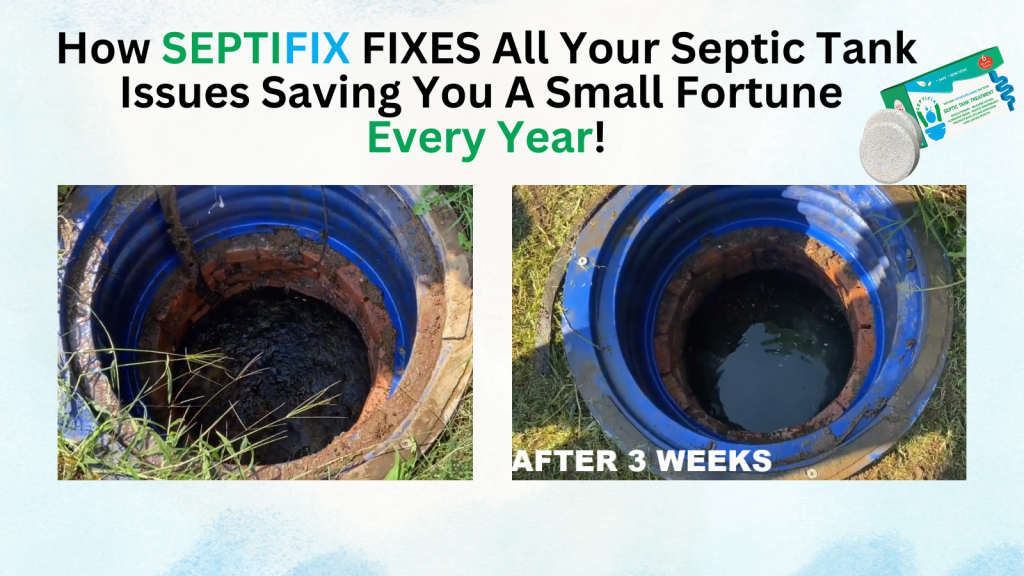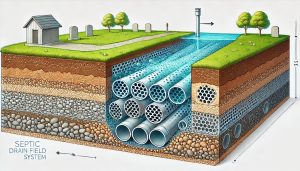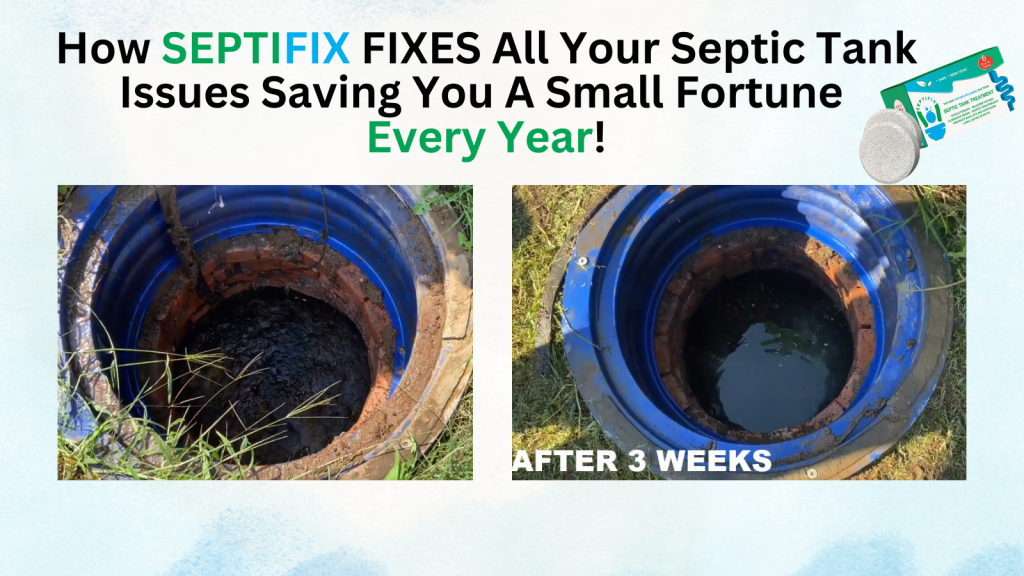Outdoor septic odors can turn your yard into an unpleasant space. These smells often arise from poorly maintained septic systems, drain field issues, or ventilation problems. Addressing these odors promptly prevents further complications and ensures a clean, odor-free environment. In this guide, we’ll explore common causes, effective solutions, and preventive measures for outdoor septic odors. You’ll also learn practical tips for routine maintenance and when to call in professionals.
Table of Contents
- Common Causes of Outdoor Septic Odors
- How to Eliminate Outdoor Septic Odors
- Preventing Future Septic Odors
- FAQs About Outdoor Septic Odors
- Septifix
- Septic Permit Links by State
Common Causes of Outdoor Septic Odors
Outdoor septic odors don’t appear without reason. Understanding the root causes helps address the issue effectively.
Poor Maintenance Practices
Neglecting routine septic tank maintenance often leads to odor problems. Over time, solid waste accumulates and overwhelms the system, releasing foul smells. Regular pumping and inspections help avoid these issues.
When septic tanks are not pumped regularly, sludge builds up, reducing the tank’s efficiency. This buildup can push waste into the drain field, causing it to fail and release foul smells.
Pro Tip: Schedule pumping every 3–5 years depending on your household size and septic tank capacity.
Drain Field Issues
A damaged or oversaturated drain field can cause persistent odors. When wastewater doesn’t properly filter through the soil, it releases unpleasant smells into the yard. Addressing drainage issues promptly is crucial.
Common drain field problems include soil compaction, root intrusion, and oversaturation due to heavy rainfall or poor water management. These problems disrupt the natural filtration process and allow odors to escape.
Preventive Tip: Avoid driving or placing heavy objects on your drain field to prevent soil compaction.
Faulty Ventilation Systems
Septic system vents release gases safely into the air. When these vents are blocked or broken, gases like hydrogen sulfide accumulate, causing strong outdoor odors. Ensuring proper ventilation is key to preventing these smells.
Blocked vents often occur due to debris, nests, or ice in colder climates. Routine inspections ensure proper airflow and prevent gas buildup.
For more on septic system ventilation, visit EPA Septic System Overview.
How to Eliminate Outdoor Septic Odors
Eliminating septic odors requires a combination of immediate fixes and long-term strategies.
Regular Septic Tank Pumping
Scheduled septic tank pumping is essential for preventing odors. Experts recommend pumping every 3–5 years, depending on household size and tank capacity.
When pumping is delayed, solids can escape into the drain field, leading to clogs and foul odors. Hiring professionals for regular maintenance ensures your system functions optimally.
Pro Tip: Keep records of septic pumping schedules for easy reference.
Check and Repair Ventilation Pipes
Inspect ventilation pipes regularly to ensure they’re not clogged or damaged. A professional can assess and repair these vents effectively.
Vents are typically located on the roof or near the septic tank. If you notice strong odors near these areas, it’s a sign of a ventilation problem.
Quick Fix: Use a flashlight to check for visible obstructions in vent pipes.
Use Septic-Safe Additives
Septic-safe additives help break down waste and reduce odor-causing bacteria. Products like Septifix tablets are designed for this purpose.
Additives introduce beneficial bacteria into the system, aiding in the breakdown of organic material. However, it’s essential to choose high-quality, tested products to avoid harming the septic system.
Explore more about septic-safe additives here.
Improve Drain Field Maintenance
Proper care of your drain field helps minimize odors. Avoid overloading the system with excess water from laundry, showers, and dishwashing.
Ensure that runoff water from rain or sprinklers doesn’t flow directly onto the drain field.
Quick Tip: Divert rainwater away from the drain field with proper landscaping.
Preventing Future Septic Odors
Prevention is key when it comes to outdoor septic odors. Follow these best practices to keep your system in top shape.
Proper Landscaping Around the Drain Field
Avoid planting deep-rooted trees or shrubs near the drain field, as their roots can damage the septic system and worsen odor problems.
Shallow-rooted plants, like grass or ground covers, are safer choices. They prevent soil erosion and allow proper evaporation.
Landscaping Tip: Maintain a clear buffer zone around your drain field.
Routine Inspections by Professionals
Annual inspections by septic professionals help detect early issues and prevent expensive repairs. Experts can assess the drain field, tank, and ventilation system.
Inspections also include checking for leaks, proper airflow, and the overall condition of the system.
Learn about professional inspections at National Onsite Wastewater Recycling Association (NOWRA).
Practice Water Conservation
Excessive water use strains your septic system, leading to inefficiency and odors. Implement water-saving practices, such as fixing leaks and using low-flow fixtures.
Water-Saving Tip: Spread out laundry loads over the week to prevent overloading the system.
Conclusion
Outdoor septic odors are more than just an inconvenience—they indicate potential system failures. Regular maintenance, proper ventilation, and responsible landscaping practices are essential for an odor-free yard. Take proactive steps to maintain your septic system, and consider trusted products for odor control.
FAQs About Outdoor Septic Odors
Why does my yard smell like sewage after rain?
Heavy rainfall can oversaturate the drain field, preventing wastewater from filtering properly. This causes gases and odors to rise to the surface. Proper drainage and landscaping can help prevent this issue.
How often should I pump my septic tank to prevent odors?
Septic tanks should typically be pumped every 3–5 years. However, larger households or systems under heavy use may require more frequent pumping.
Can septic additives really help reduce odors?
Yes, high-quality septic additives can help maintain bacterial balance, break down waste more efficiently, and reduce foul odors. However, they should complement—not replace—regular maintenance.
Is it safe to plant trees near my septic system?
No, deep-rooted trees can damage pipes and the drain field. Opt for shallow-rooted plants like grass to avoid these risks.
Septifix










